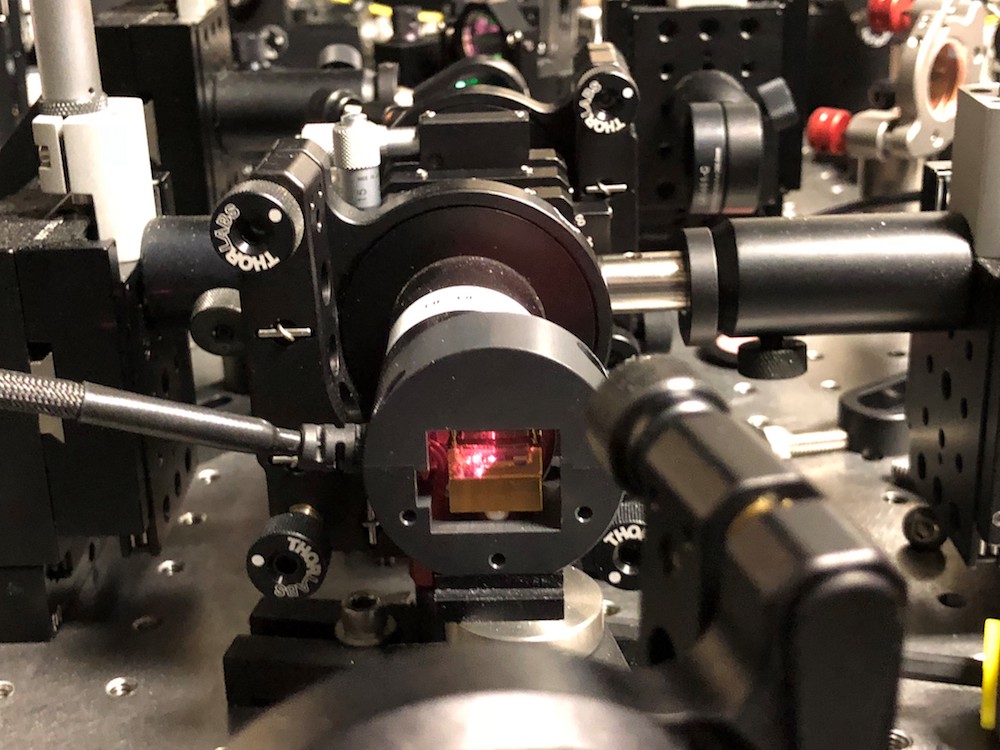
Lotteries, accidents and rolls of dice — the world around us is full of unpredictable events. Yet generating a truly random series of numbers for encryption has remained a surprisingly difficult task.
Now, researchers have used a mind-bending experiment relying on both Albert Einstein's theory of relativity and quantum mechanics, which describes the probabilistic nature of subatomic particles, to produce strings of numbers that are guaranteed to be random.
"If you sent in some team of people to examine our experimental components as closely as they wanted and then have them try to come up with a prediction for what these random numbers would be afterwards, there's just no way they could predict them," study co-author and mathematician Peter Bierhorst of the National Institute of Standards and Technology (NIST) in Boulder, Colorado, told Live Science. [The World's Most Beautiful Equations]
Computers everywhere use random numbers as keys to lock or unlock encrypted information. Many processes for producing these keys — such as the random number generator that's probably on your computer right now — use an algorithm that spits out a seemingly arbitrary string of numbers. Other approaches try to make use of real-world randomness, for instance measuring the length of time between keystrokes or the fluctuating temperature of a computer server, to produce random numbers.
But such methods are still susceptible to attack. Savvy hackers can either tamper with a random number generator or learn its underlying principles to figure out what numbers it's going to produce. In 2012, security researchers found that tens of thousands of internet servers were vulnerable to hacking because of their reliance on poor-quality random number generators.
Entangled photons
Quantum mechanics, on the other hand, offers truly random outcomes. For instance, a light particle, or photon, can either be pointing up or pointing down. Before it's measured, the particle is in a superposition state, in which it has a 50 percent chance of pointing up and a 50 percent chance of pointing down once measured. Its eventual outcome is certifiably random, but using this property for number generation has still been somewhat problematic, the researchers said.
"Suppose I'm giving you a photon," Bierhorst said. "And I say, 'Oh it's in a superposition state of up and down.'" Upon measurement, he said, the photon turns out to be down, an outcome that nobody should have been able to predict in advance.
Sign up for the Live Science daily newsletter now
Get the world’s most fascinating discoveries delivered straight to your inbox.
"But now you'll say, 'How can I know that photon wasn't always down?'" Bierhorst added. In other words, there's no way to prove, for any individual photon, that it was in a superposition state before it got measured. To get around this conundrum, Bierhorst and his colleagues gave each photon a buddy. These pairs of photons were entangled with one another, meaning that their properties were forever tied together. [Infographic: How Quantum Entanglement Works]
In their experiment, the researchers then sent the two photons to opposite ends of their lab, separated by a distance of 613 feet (187 meters), and measured their properties. Because of their entanglement, the photons always returned coordinated results; if one was found to be up, the other was always down.
Because they were so far apart, there's no way for the photons to have discussed their perfect lockstep synchronization unless they could send signals faster than the speed of light, which would violate Einstein's theory of relativity. The two photons therefore serve as a check on one another, guaranteeing that they were actually in a superposition state before being measured and that their results are genuinely random, the researchers said. The new method was described today (April 11) in the journal Nature.
"You can really say they have built the ultimate quantum random number generator," said quantum physicist Stefano Pironio of the Free University of Brussels in Belgium, who was not involved in the work.
But, he added, the method took about 10 minutes to produce 1,024 random strings, whereas current cryptographic processes would need far faster number generators.
The new technique's first real-world use will come when it's incorporated into NIST's randomness beacon, a public source of randomness for researchers studying unpredictability, Bierhorst said.
But he added that he hopes the experimental setup could one day be shrunk enough to fit on a computer chip and help in the creation of "unhackable" messages.
Originally published on Live Science.

Adam Mann is a freelance journalist with over a decade of experience, specializing in astronomy and physics stories. He has a bachelor's degree in astrophysics from UC Berkeley. His work has appeared in the New Yorker, New York Times, National Geographic, Wall Street Journal, Wired, Nature, Science, and many other places. He lives in Oakland, California, where he enjoys riding his bike.










